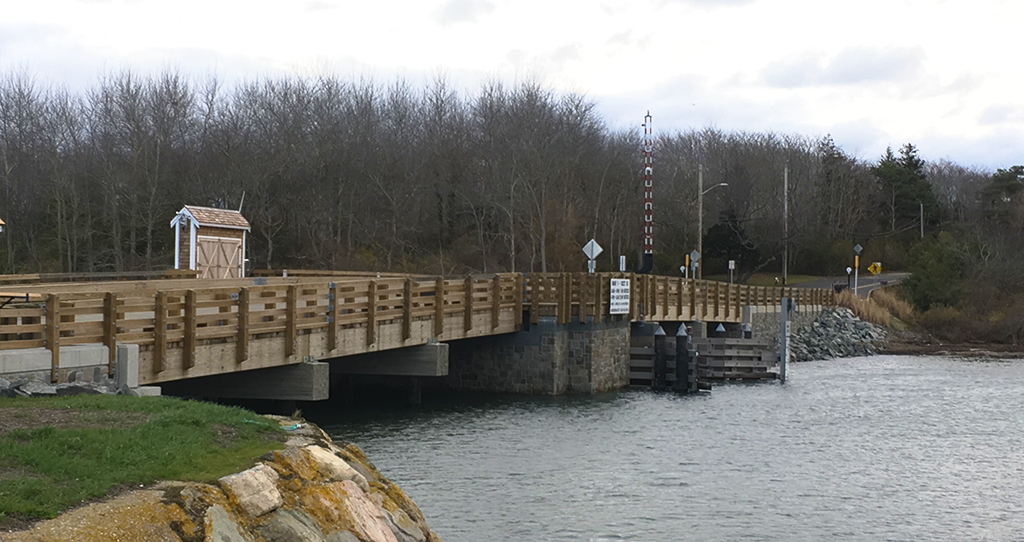 Friday, September 27, 2024
Friday, September 27, 2024  Friday, September 27, 2024
Friday, September 27, 2024 
The historic Mitchell River drawbridge in Chatham, Massachusetts was one of the last remaining timber drawbridges in the US. After it was deemed structurally deficient, an extensive process for a new design began. The replacement project required multiple mass placement concrete pours as well as cold weather placements.

The winning design incorporated the traditional materials along with newer, more durable materials. The new bridge is made with an engineered lumber superstructure and a steel and concrete substructure.
The project required multiple mass placement concrete pours—with the largest at 165 cubic yards—as well as cold weather placements. SPS New England was required to monitor the concrete’s internal temperature and temperature gradients. Logging the temperature ensures the owner knows the placement conforms to their specifications.
MassDOT specifications say the maximum internal temperature for a mass placement is 154°F and the maximum differential is 38°F. SPS New England needed reliable data to show the project was meeting these specifications. Frustrated with thermocouples and USB dataloggers that were faulty and unreliable, SPS New England decided to use COMMAND Center on this bridge project.
The team used COMMAND Center sensors on all concrete parts of the bridge, including pier caps, footings, and retaining walls. They also used COMMAND Center to perform a test to build a hydration analysis. MassDOT requires a hydration analysis before mass placements to show if concrete will exceed maximum core or gradient temperatures. SPS New England’s test showed they would not exceed maximum temperatures and thus would not need to develop a temperature control plan. They poured the larger mass placements in the winter to help avoid critical maximum temperatures.
Keep reading this blog on the COMMAND Center website
The next publication deadline is Friday at noon